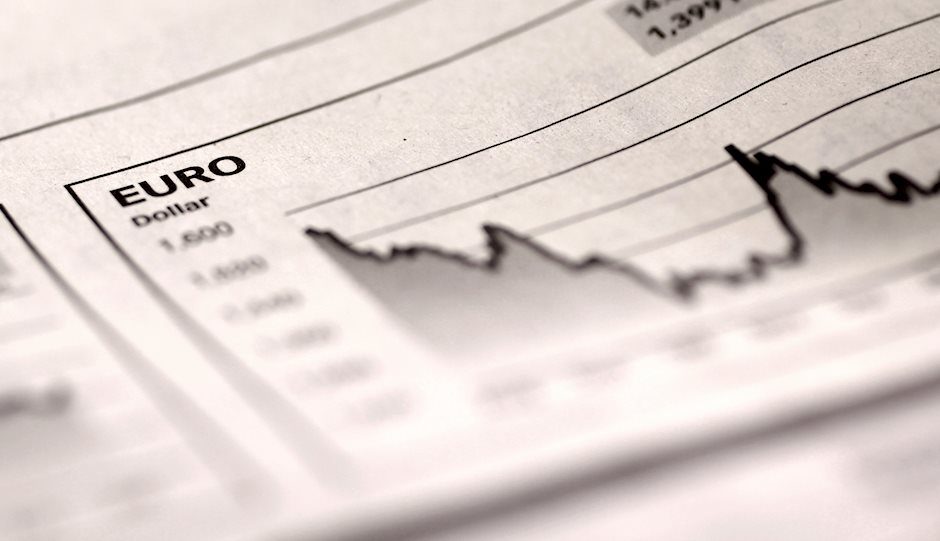Euro rebounds on lack of hint for further cuts

The European Central Bank (ECB) yesterday lowered its deposit facility rate by 25bp for the second time this year (and its other two rates by 60bp, but that was just a technical twist that meant to narrow the spread between the deposit facility and the main refinancing rate from 50 to 15bp, so don’t be confused: it was not an additional easing and didn’t see any sharp reaction from the market).
But ECB Chief Christine Lagarde kept a poker face for what’s next and said that there is no commitment to a particular rate path.
And the updated forecasts didn’t help much either. The European officials revised their growth projections lower for the next two years and kept their inflation forecasts unchanged, but they increased their core inflation forecast for this year and the next. It was like tightening the belt on one side but loosening it on the other.
As such, the ECB meeting ended with a lot of unanswered questions. It is now widely believed that the ECB will refrain from cutting rates again in October – that probability fell from 40% to 20% after yesterday’s decision. The 10-year German bund yield rebounded from August lows and the euro gained strength on hint that the ECB will do less to save the economy and more to make sure that prices are stable than... the Federal Reserve (Fed). The EURUSD rebounded from 1.10 and is trading at 1.1086 at the time of writing.
In equities, the ECB decision resonated well for the Stoxx 600. The index gained 0.80% yesterday, but the news flow wasn’t enchanting, mind you. Stellantis announced to suspend the production of the electric Fiat 500 in Italy due to a lack of orders in Europe. The shares fell.
Draghi’s plan
Ex-ECB chief Mario Draghi came up this week with an almost 400-page proposal across the EU targeting key sectors such as defense, digitalization, and clean energy. Draghi wants the Europeans to invest massively in these three sectors and finance this massive investment by issuing joint bonds. The plan aims to make Europe more competitive and less dependent on external resources, make it better compete with giants like the US and China while creating an EU-wide treasury bond to help finance these initiatives. It is an excellent initiative, really, it would not only give Europe a bigger posture in the global platform but it could also help the old continent get up to date in these sectors.
Such a big co-investment could indeed boost inflation in the short-run and pressure the yields to the upside, but faster, healthier and sustainable growth, and improved productivity are the best known remedies for inflation in the medium to long run.
But there is a problem. Draghi’s plan demands a lot of political effort within the EU that the countries like Germany and France – that are sliding to the right – will not be ready to make.
Elsewhere
US PPI came in higher-than-expected on a monthly basis, but lower-than-expected on a yearly basis. The US 2-year yield remains under a decent pressure, the US dollar remains sold across the board, and equities continue to recover. The S&P500, Nasdaq, Dow Jones and the Russell 2000 index extended gains yesterday. Nvidia gained nearly 2% on news that OpenAI is preparing the release of ‘Strawberry’ – a new AI model that’s ‘designed to handle advanced problem-solving tasks better by focusing on step-by-step human-like reasoning, which enhances the quality of its responses, especially for difficult queries’. This is how ChatGPT describes the new ‘Strawberry’. Combined with Nvidia CEO Jensen Huang’s complaints about ‘too strong demand for its chips’ yesterday, the AI fatigue seems to have eased this week. VanEck’s semiconductor ETF held ground at the 200-DMA this week, and its MACD – which indicates short-term trend – is about to turn positive.
Gold rallied to a fresh ATH on falling yields and softening US dollar, while crude oil tested the $70pb resistance despite unsupportive news from the IEA. The agency said that global demand growth is slowing ‘sharply’, that the world consumption increased by 800’000 barrels per day in H1 – a third of the expansion in the same period last year, and its head Fatih Birol said that ‘the Chinese economic growth is slowing down, and the penetration of the transportation system by electric cars is going at a very strong pace’. Yesterday’s rebound in oil prices was certainly refreshing but the rising demand concerns will likely limit the topside in oil prices. Topsellers will likely remain in charge within the $70/72pb range.
Author

Ipek Ozkardeskaya
Swissquote Bank Ltd
Ipek Ozkardeskaya began her financial career in 2010 in the structured products desk of the Swiss Banque Cantonale Vaudoise. She worked in HSBC Private Bank in Geneva in relation to high and ultra-high-net-worth clients.

















